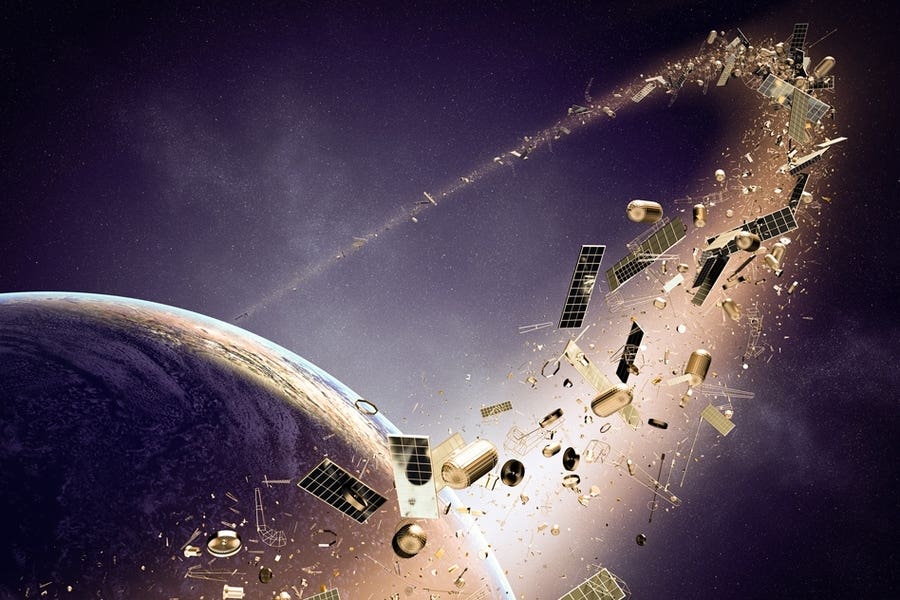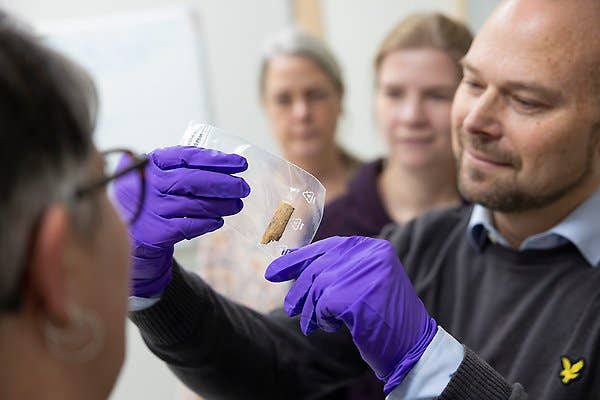Scientists warn that space is becoming too crowded to manage safely
Scientists warn Earth’s orbit is nearing its limit as satellite numbers soar, increasing collision risk and operational strain.

A new study warns that low Earth orbit may soon reach its safe operational limit, as rising satellite numbers make space traffic harder to manage. (CREDIT: MIT)
Earth’s orbit is getting crowded, and scientists are warning that space may soon become too risky to manage safely. A new study published in Acta Astronautica takes on a question that could define the future of spaceflight: How many satellites can we safely fit around Earth before it all becomes unmanageable?
The Crowding Problem Above Our Heads
The study looks beyond the simple number of satellites in space. Instead, it examines whether orbit can remain operational as satellite populations continue to soar. Researchers introduced three key terms to describe the state of near-Earth space: capacity, occupation, and criticality.
Capacity marks the upper limit of how many satellites can safely operate at once. Occupation refers to how many are already there. Criticality captures the rising risks as orbit fills up — collisions, tracking errors, and operational failures.
For decades, engineers and policymakers have treated space as infinite. But the portion of low Earth orbit (LEO) that satellites can realistically use — up to about 1,200 miles above Earth — is limited by orbital mechanics and by our ability to track and control thousands of fast-moving objects. Each new satellite increases the complexity of traffic management and the potential for disaster.
How Researchers Measured the Limits
The team used Keplerian dynamics, the same principles that describe how planets move around the Sun, to model how satellites interact in orbit. They combined these equations with real-world data from the U.S. Space Command’s catalog of tracked objects — satellites and debris alike. Every time two objects passed within about 200 meters (roughly 660 feet) of each other, researchers logged it as a potential collision requiring avoidance maneuvers.
From there, they analyzed how adding more satellites affects the number of these close approaches, how often operators must take evasive action, and how much time and fuel those maneuvers consume. They found that the problem doesn’t scale in a straight line. Doubling the number of satellites doesn’t just double the risk — it can multiply it many times over.
“The system becomes harder to manage, not just larger,” the authors wrote. The growth of satellite populations pushes orbital operations toward a tipping point where coordination breaks down.
What the Numbers Show
In 2019, only about 0.2% of satellites performed more than ten collision-avoidance maneuvers per month. By early 2025, that number had risen to 1.4%, according to the study — a sevenfold increase. While that may seem small, it translates to roughly 340 satellites spending a lot of time dodging other spacecraft and debris.
The total number of tracked objects in low Earth orbit jumped from about 13,700 in 2019 to over 24,000 this year — a 76% increase. And industry forecasts predict as many as 70,000 satellites could orbit Earth by the end of the decade, a fivefold increase in just six years.
Maya Harris, a research assistant at the Massachusetts Institute of Technology and co-author of the study, said operators are reaching a practical limit. “Operators don’t want to be spending all their time worrying about collision avoidance.” “They don’t want to spend all of their propellant doing maneuvers.”
The team used a threshold of ten maneuvers per month as the point where satellite operations may become too demanding to remain beneficial. Once you hit that level, it’s not just fuel and time at risk — it’s also reliability. Each maneuver adds uncertainty to orbital paths and can unintentionally create new risks of collision elsewhere.
How Congested Is Too Congested?
The study identified two orbital “hot zones” that are already heavily congested: between 400 and 600 kilometers (roughly 250 to 370 miles) and between 700 and 800 kilometers (about 435 to 500 miles). These bands host many active communication satellites and a lot of debris from decades of launches. In these regions, many spacecraft already exceed that ten-maneuver-per-month threshold.
“Although most of orbit is not yet at capacity, some regions already are,” Harris said. She explained that the risk of collision in these congested areas is so high that even small increases in satellite numbers could tip the system into instability.
Hugh Lewis, a space debris expert at the University of Birmingham in England who was not involved in the study, said that managing these conditions varies depending on the type of mission. “For an Earth-observation spacecraft, there’s probably a much bigger disruption to make a maneuver,” he said. “But for spacecraft like Starlink, they have a great deal of flexibility about the orbits that they can be in and still deliver service.”
The Growing Challenge of Avoidance
Avoidance maneuvers aren’t foolproof. Tracking data can be inaccurate, leading to unnecessary or mistimed moves. And each avoidance burn changes a satellite’s orbit slightly, which can lead to new, unpredictable close passes. Earlier research has shown that frequent maneuvers may actually increase long-term collision risk, especially when thousands of satellites share similar orbital paths.
Lewis noted that data suggest there’s already around a 10% chance of an in-orbit collision happening within the next year. A single crash could create thousands of debris fragments, increasing the odds of further collisions — a scenario known as the Kessler Syndrome.
“If we have more collisions that create a lot of debris, that will lead to us reaching full orbital capacity much sooner,” Harris said.
Some operators are already performing an enormous number of avoidance maneuvers. SpaceX’s Starlink constellation, for instance, executed about 145,000 such maneuvers in the six months leading up to July 2025 — an average of four per satellite per month. “They seem to be able to accommodate that really well,” Lewis said. “They don’t seem to be saying that it’s getting really hard, so they might be able to accommodate it even if we get to ten per month.”
Searching for Solutions
The researchers suggest that satellite operators can reduce risk by coordinating launch orbits and avoiding crowded regions. But Lewis doubts large-scale coordination between global operators will happen anytime soon. “I don’t think it’s likely that you would get SpaceX and the Chinese to coordinate how they structure and operate their systems,” he said.
Still, the study urges regulators and companies to start thinking of orbit the way we think of highways or airspace — finite systems with maximum capacities. Launching more satellites without improving traffic management is like adding thousands of cars to a city without expanding the roads or updating traffic lights.
The authors recommend improving tracking technology, enforcing stricter de-orbiting rules for old satellites, and designing spacecraft that can safely maneuver or self-remove after their missions. They argue that maintaining orbital safety depends not just on how many satellites are launched, but on how effectively humanity manages the traffic already up there.
A Warning for the Future
With megaconstellations planned by companies and governments worldwide, the orbital environment could change faster than regulations can adapt. The study’s framework for measuring capacity, occupation, and criticality offers a way to forecast these challenges before they spiral out of control.
Space may be vast, but the useful orbits around Earth are anything but limitless. Unless satellite operators, policymakers, and scientists work together to build smarter systems, the skies above could soon become as congested — and dangerous — as a rush-hour freeway.
Research findings are available online in the journal Acta Astronautica.
Related Stories
- Earth’s magnetic field is shifting — and satellites are feeling it
- Space debris sensor promises safer future for satellites
- New X-ray scans track violent solar winds threatening Earth’s satellites
Like these kind of feel good stories? Get The Brighter Side of News' newsletter.
Joseph Shavit
Science News Writer, Editor-At-Large and Publisher
Joseph Shavit, based in Los Angeles, is a seasoned science journalist, editor and co-founder of The Brighter Side of News, where he transforms complex discoveries into clear, engaging stories for general readers. With experience at major media groups like Times Mirror and Tribune, he writes with both authority and curiosity. His work spans astronomy, physics, quantum mechanics, climate change, artificial intelligence, health, and medicine. Known for linking breakthroughs to real-world markets, he highlights how research transitions into products and industries that shape daily life.



